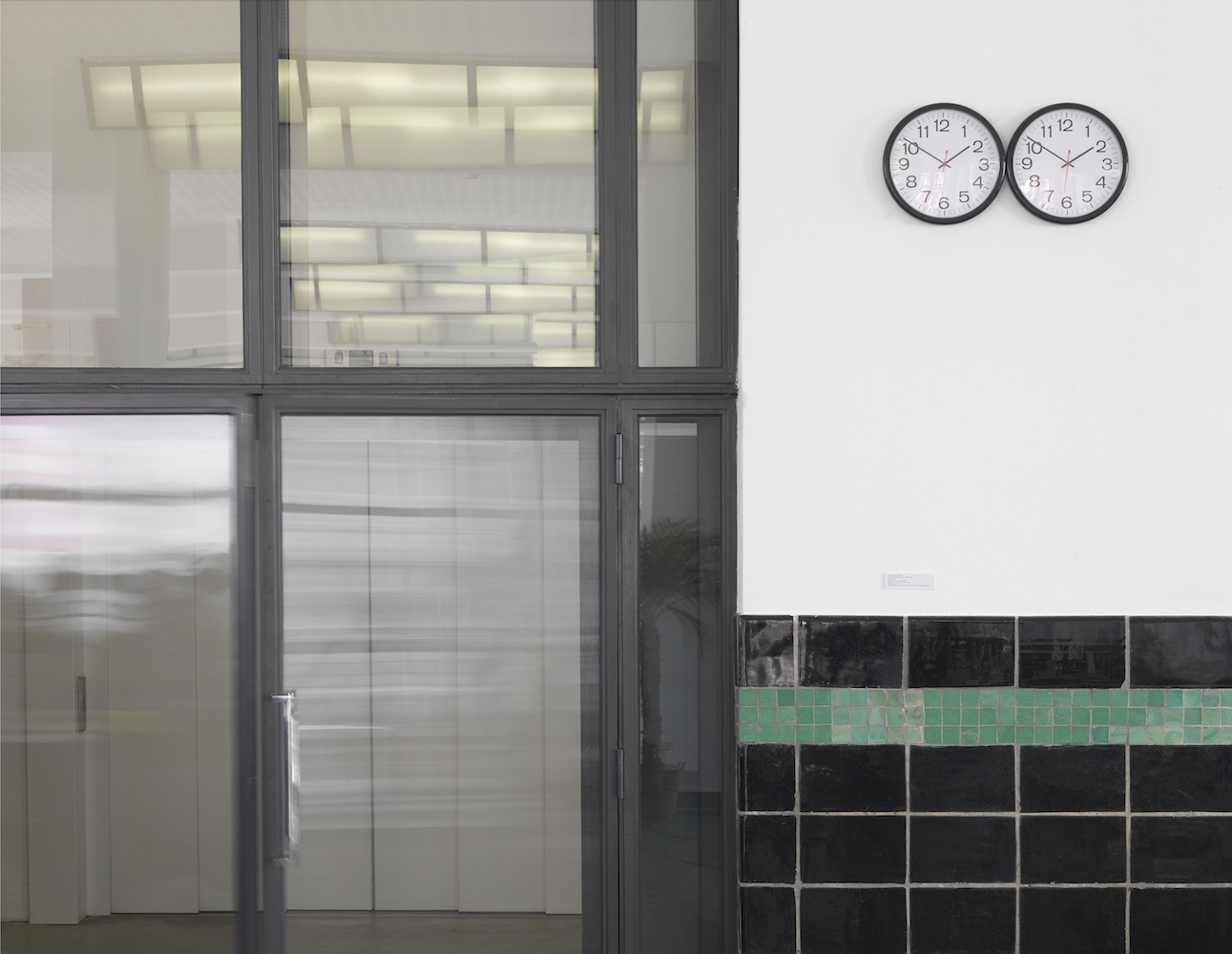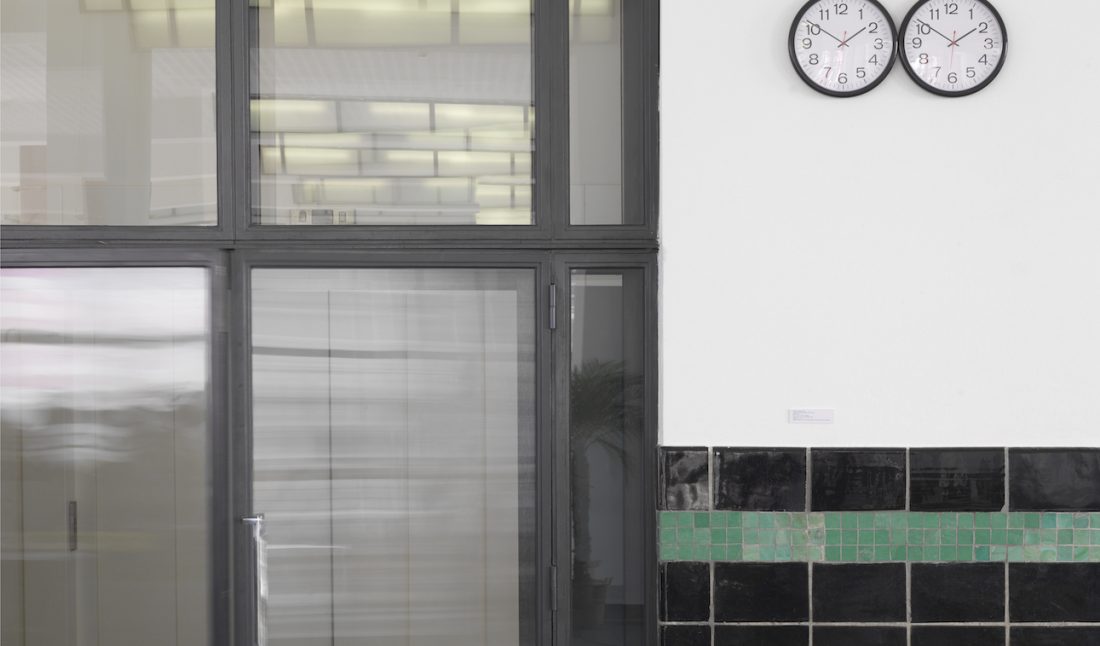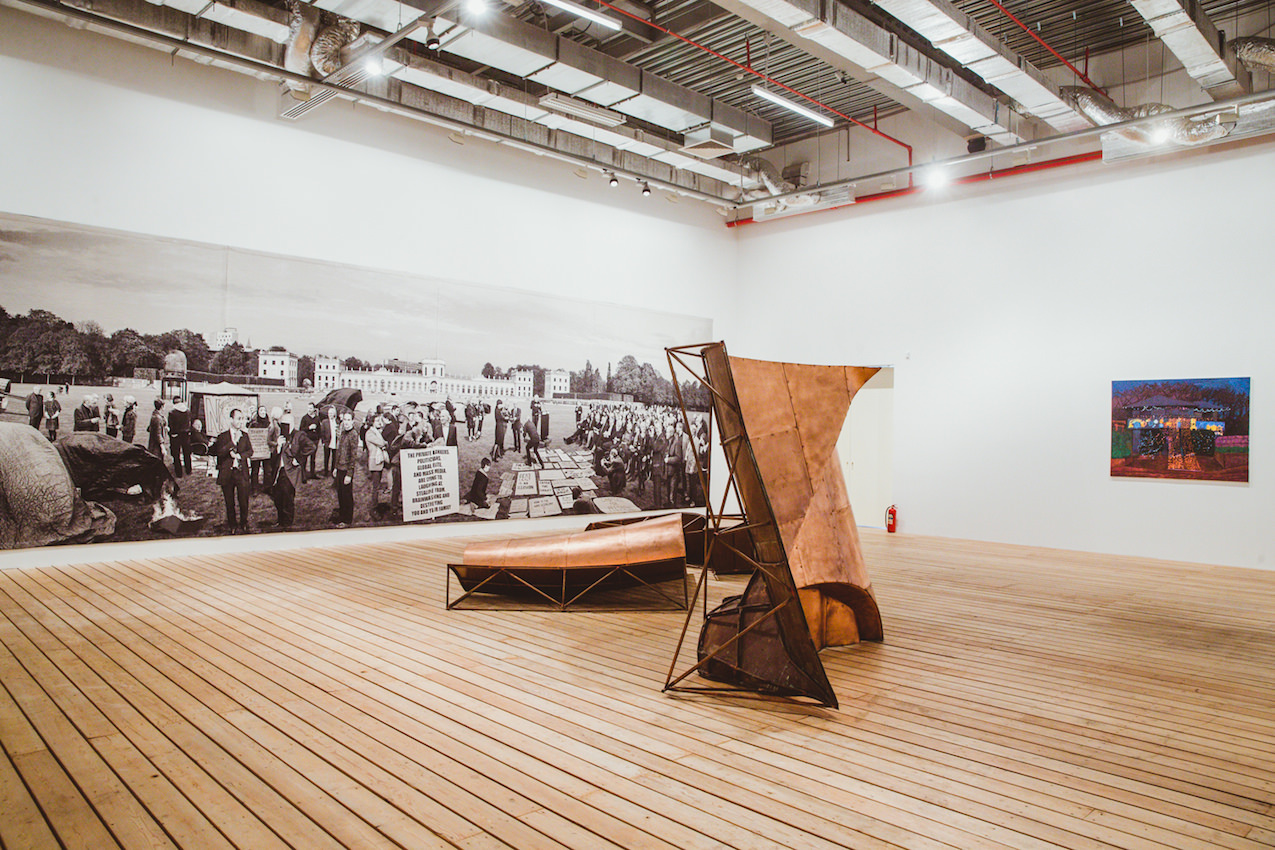Felix Gonzalez-Torres was one of the most influential artists to come out of the 20th century. Today, twenty years later, his work remains—because his practice was equally as much of himself as it was of the world around him. His minimalist installations, in which he used everyday items such as stacks of paper, strings of light bulbs, harmonious clocks, and, of course, piles of candy, are incredibly intimate, yet, they also can address the jarring realities of being queer during the AIDS epidemic in New York City.
Such is the case with “Untitled” (Portrait of Ross in L.A.), which can be read a visual love letter and allegorical representation of his partner, Ross Laycock, who died tragically of AIDS-related complications. Realized in a simple pile of candy on a gallery floor, it can be read as both a profession of love and a vision of loss. It can be both the happiness that comes out of our romantic relationships embodied by the sweetness of the candy and the somber disappearance of that candy, as visitor after visitor can take one for themselves. The constant loss of candy throughout the day, which can be replenished, reflects the cyclical nature of life. It is as much heartbreaking as it is joyous.
 Felix Gonzalez-Torres, “Untitled” (Perfect Lovers), 1987-1990, wall clocks, original clock size: 13 1/2 inches diameter each, edition of 3, 1 AP. Installation view: Felix Gonzalez-Torres: Specific Objects without Specific Form. Wiels Contemporary Art Centre, Brussels, Belgium. 16 Jan. – 28 Feb. 2010. Cur. Elena Filipovic; 5 Mar. – 2 May 2010. Installation cur. Danh Vo. [First installation at first venue. First of three venues. Additional venues: Fondation Beyeler, Basel, Switzerland. 21 May – 29 Aug. 2010; MMK Museum für Moderne Kunst, Frankfurt, Germany. 28 Jan – Apr. 2011.] Photo by Allard Bovenberg, © Felix Gonzalez-Torres, courtesy of the Felix Gonzalez-Torres Foundation.
Felix Gonzalez-Torres, “Untitled” (Perfect Lovers), 1987-1990, wall clocks, original clock size: 13 1/2 inches diameter each, edition of 3, 1 AP. Installation view: Felix Gonzalez-Torres: Specific Objects without Specific Form. Wiels Contemporary Art Centre, Brussels, Belgium. 16 Jan. – 28 Feb. 2010. Cur. Elena Filipovic; 5 Mar. – 2 May 2010. Installation cur. Danh Vo. [First installation at first venue. First of three venues. Additional venues: Fondation Beyeler, Basel, Switzerland. 21 May – 29 Aug. 2010; MMK Museum für Moderne Kunst, Frankfurt, Germany. 28 Jan – Apr. 2011.] Photo by Allard Bovenberg, © Felix Gonzalez-Torres, courtesy of the Felix Gonzalez-Torres Foundation.
The act of taking the candy, of touching the art for that matter, is revolutionary in the field of visual art for its freedom of interactivity. Not only does it incite questions of what the art is and what art can be, but it creates a binding experience with you and everyone else in the gallery, all sucking candy, engaged in the same act at the same place and time. This speaks to the universality of pain and love. The AIDS crisis wasn’t about one person and the loss of that life but that of a whole community and their constant losses and continual suffering.
The parallels between then and now are overwhelming. Both are times of suffering and community where our government seems inadequate (or, in the case of AIDS, unwilling) to help and the art world is in flux. Gonzalez-Torres made beauty out of that time of immense suffering. It is important now, more than ever, during this worldwide pandemic of COVID-19, that we remember that beauty, that we reflect on the work and life of Felix Gonzalez-Torres.
His work with strings of light bulbs quite possibly can best reflect his aesthetic roots in conceptualism and minimalism. Yet, unlike Sol LeWitt or Donald Judd—both of whose work is very much grounded in responding to the canon and distilling art of its excess to just form, space, and light—Gonzalez-Torres stays personal in his content. In form, “Untitled” (March 5th) #2, is just two, light bulbs, which could be one for himself and the other for Ross. His work is emotionally charged, from his photographs of empty beds (intimate spaces displayed on billboards, the most public of spaces) to the mystique of his “Datelines.” Yet, they all can thematically circle back to the ideas of loss and gain, of love and time. Even the idea of “taking” or “not taking” (as the viewer chooses) that is so significant in his of piles of candy is also present in his work with stacks of paper.
One of his most poignant works is “Untitled” (Perfect Lovers), in which two identical clocks are initially set to the same time, in perfect unison, but eventually, as time goes on, fall out of sync or stop entirely, though they are perpetually reset. The notions of inevitably of time, harmony, and imbalance, and the hauntingly realistic portrayal of the life cycles of relationships are present in this work.
Gonzalez-Torres never gave a singular, unilateral reading of his work. He wanted his practice to allow for open, evolving interpretations. To me, viewing his art with this new perspective of COVID-19, I see the glimmers of hope in each tick of his clocks and every piece of candy on the gallery floor.
His work reminds me today, as stories of loss and isolation flood our news, that good will come out of this scary time, just as he made beauty out of his own afflictions. Art, however its form, will grow out of the chaos of COVID-19. Stories of isolation and small kindness will be told. The world will one day seem “back to normal,” even if that normal is a new normal. There is hope.











